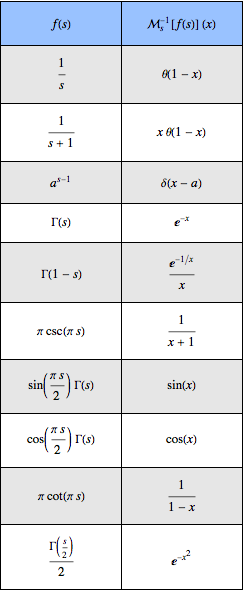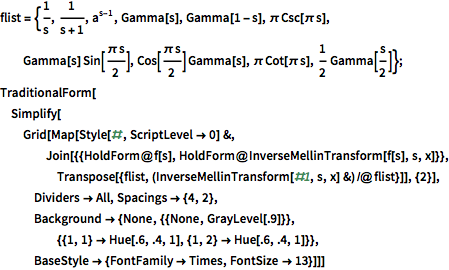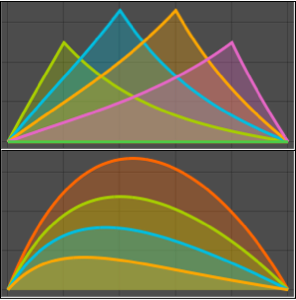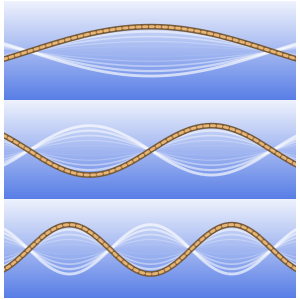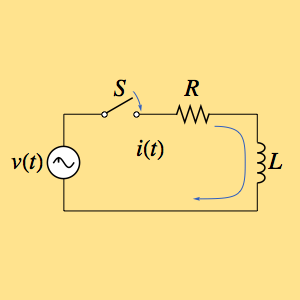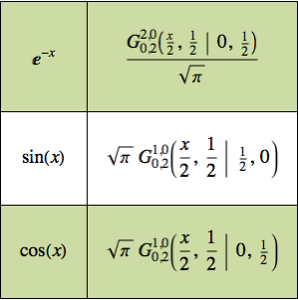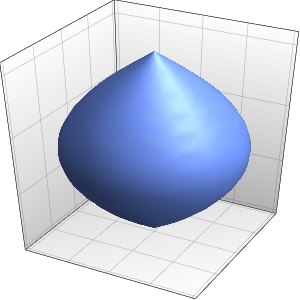Find an Inverse Mellin Transform
Compute an inverse Mellin transform using InverseMellinTransform.
In[1]:=
InverseMellinTransform[Gamma[s], s, x]Out[1]=
Obtain the strip of holomorphy assumed by InverseMellinTransform.
In[2]:=
InverseMellinTransform[Gamma[s], s, x, GenerateConditions -> True]Out[2]=
Compute an inverse Mellin transform leading to BesselJ.
In[3]:=

InverseMellinTransform[(2^(-1 + s) a^-s Gamma[1/2 + s/2])/
Gamma[3/2 - s/2], s, x]Out[3]=
Plot the result for different values of  .
.
In[4]:=
InverseMellinTransform[(2^(-1 + s) a^-s Gamma[1/2 + s/2])/
Gamma[3/2 - s/2], s, x];
Plot[Table[% , {a, 1, 5}] // Evaluate, {x, 0, 7}]Out[4]=
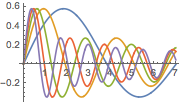
Create a table of basic inverse Mellin transforms.
show complete Wolfram Language input
Out[5]//TraditionalForm=
